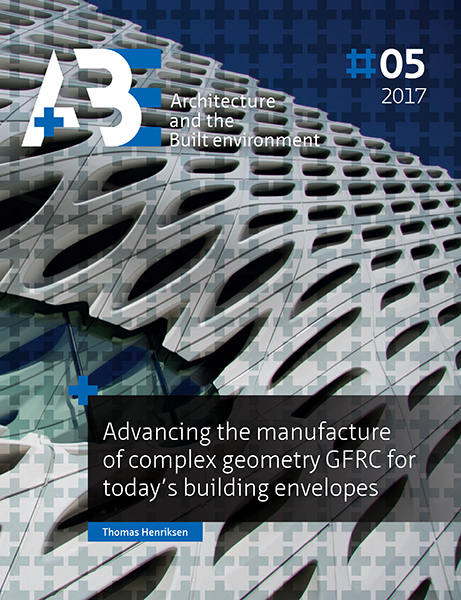Introduction to state‑of‑the‑art thin-walled GFRC
DOI:
https://doi.org/10.7480/abe.2017.5.3639Abstract
Thin-walled fibre reinforced concrete (FRC) elements are being adapted for large scale buildings with complex geometry envelopes. The current production methods, developed in the initial stages of glass fibre reinforced concrete (GFRC) elements in the 1970s, are limited when striving to produce more complex shaped FRC elements. The limitations of the FRC elements in terms of material properties and surface quality are described for these current state of the art production methods. New production methods and casting techniques are proposed that will advance the application of thin-walled FRC for buildings with complex geometry envelopes. Evaluation of the current state of the art production methods concluded that the sprayed GFRC methods are currently the most flexible solution which has the greatest potential for adapting the method to the requirements of complex geometry buildings. Further development of thin-walled GFRC elements would be possible by developing a mould system for complex geometry panels with an edge-return, which can utilise glass fibre reinforced ultra high performance concrete (GF-UHPC) with a vacuum technology, it would be possible to produce complex geometry GFRC elements with an increased material performance and yet still meet the aesthetic requirements of minimal visual defects in the surface of thin-walled elements.

